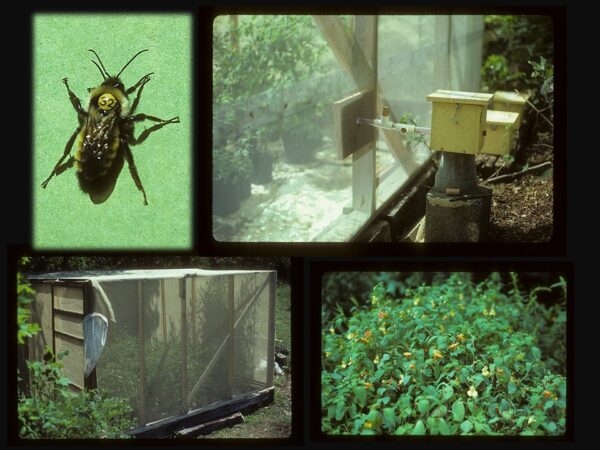Q: When you were a child, what was your response to this question: “What do you want to be when you grow up?”
A: I don’t actually remember being asked this as a child – maybe because people never thought I’d amount to much! I do recall not wanting to be the typical things like a fireman, policeman, or cowboy. I struggled through elementary school because I was always looking out the window.
Q: Share the pivotal moment in your life that helped you choose your field of study.
A: Many of my earliest memories are from being in the natural world. I remember, at about age 3, my fascination with mason bees in the mortar of the bricks of our house. Over the years, I collected and kept spiders, snakes, turtles, lizards, and all kinds of insects and then released them — sometimes by mistake in the house, to the great dismay of my mother. I was generally interested in plants, but it wasn’t until college that I really tuned in to botany.
I was lucky to attend UNC-Charlotte in its “organismal biology” golden age, where I took a dozen classes on the subject. I also worked as a gardener in the UNC Charlotte Botanical Gardens, where I fell under the guidance of mentors who encouraged me to attend graduate school.

A few images from Randall’s dissertation project, in which he individually numbered hundreds of bumblebees.
Q: Tell us about a time you encountered a tricky problem. How did you handle it and what did you learn from it?
A: I remember solving the problem for one part of my dissertation research on competition for pollination between our native Jewelweeds: Impatiens capensis and Impatiens pallida. This required creating an enclosure called a pollinatium, where I could arrange plants in different ratios to examine the effects on bumblebee foraging behavior. But I also had to find and collect bumblebee colonies — and number each bee.
To locate my first colony, I followed a bumblebee back to an abandoned mouse nest in an old barn. Mouse nests are just the right size and have all the necessary materials bumblebees need. One evening, I puzzled over how to get an old mouse nest full of bumbles into a little box. Even barely touching the nest caused a huge buzzing commotion from the colony. I noticed, though, that a single bee crawled out to inspect the intruder rather than the whole colony mounting an attack. I searched the barn for some sort of container and found an old Mason jar with a lid. By gently disturbing the nest, one bee at a time would come out, angrily climb on my pencil, and then I would tap it into the jar.
After collecting all the bees, I carefully placed the nest into the colony box, but noticed that the queen remained in there with her brood. The next step was tagging the bees. For this challenge, I cooled all the lady bees down in my refrigerator and, one-by-one, attached the tags. In all, I collected 14 bumblebee colonies, which included hundreds of bees.
To make a much longer story short – I was able to control foraging behavior between the two Impatiens species and determine that the yellow-flowered one wins over the orange-flowered one.
Q: Describe your research in 5 words.
A: Impatiens can be a virtue.
Q: What are your passions outside of research?
A: I love canoeing the blackwater rivers of North Carolina, backpacking, hiking, bicycling, traveling, cooking — but mostly eating and drinking — and spending time with my family. A friend told me long ago: “All work and no play makes Johnny a dull boy.” But seriously, you have to give your brain a break and, like I was fond of doing in elementary school, look out the window!


